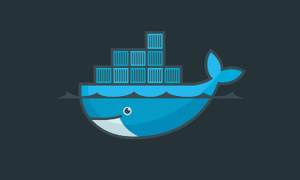Docker inside out

Get hands-on knowledge on daily Docker usage and administration
“Build once, run everywhere.”
Taught by: Agoston Deim
Length: 5 hours
Learn Kubernetes with us
Our Kubernetes Administration course has become available within Early access. Buy this course now with 80% off. More info
Do you want to use Docker effectively?
Docker is a leading container technology. Learning with us how to use it effectively will boost your career and possibilities a great deal.
The goal of this course is to give you practical knowledge about Docker usage and infrastructure. You will learn how to build and run your own Docker servers and images and how to build your own data center with Docker native clustering technology, Swarm.
This course also provides comprehensive knowledge about Docker. We not only show you how to issue commands but we also explain the inner workings of Docker and the logic behind all the parts. You will learn every necessary detail about this container platform.
Furthermore, as long as there is no major upgrade for Docker we will provide updates for the course.
Join our course today and start learning Docker in an easy and practical way.
-
+
−
Recommended for
Developers, infrastructure engineers, DevOps
-
+
−
Prerequisites
Basic Linux and networking skills
-
+
−
Technical requirements
VirtualBox or VMWare Player, internet connection
-
+
−
Acquired skills
You will be able to deploy, run and manage Docker containers and build scalable infrastructure on private clouds.
Curriculum and videos
Start the course for free! No credit card needed.
Section 1 - Docker basics and installing Docker
You will learn what Docker is, how it is related to traditional virtualisation, what the elements of the Docker infarstructure are and how to install Docker on your own Linux server.
- Virtual lab and downloads info.pdf
- docker1-virtualbox.ova virtual machine, 650MB
- docker1-vmware.ova virtual machine, 694MB
- Video 1 - Docker fundamentals.mp4 23:48, 42MB
- Video 2 - Installing Docker.mp4 16:58, 40MB
Section 2 - Working with containers
You will learn how to run and manage containers with Docker. Managing containers includes creating, starting and stopping them, grabbing the logs and watching the processes inside a container.
- Video 3 - Working with containers.mp4 39:45, 69MB
Section 3 - Managing Docker images
In this section you will learn how to pull images from the configured registry, modify the images and upload the modified image to the registry. The video also covers moving the images to other Docker hosts, backing up and restoring images.
- Video 4 - Managing images.mp4 24:41, 49MB
Section 4 - Managing Docker Volumes
The section will cover the usage of persistent data stores in a Docker environment called volumes. You will learn the charasteristics of persistent data stores, such as the difference between internal and external volumes and how and when to use them.
Section 5 - Docker networking
Docker provides networking to the containers. In this section you will learn the basics of Docker networking as well as the multi-host networking of Docker. This covers the default Docker network stack and how it works on a single host. Also, how it works together with containers which provide network services such as a web server, web service or email services. You will also learn how to create a multi-host network and connect two or more containers.
- Video 6 - Docker Networking basics.mp4 28:20, 54MB
Section 6 - Advanced Docker usage
You will learn how to create custom Docker images and deploy applications based on these images with multiple containers with only one command. Creating your images covers defining all the required parameters of a Dockerfile - which is used to create images - adding your own piece of code into the images, configuring the network connections and persistent data stores. The configuration of Docker Compose to start and stop multiplie containers in one step is covered as well.
- Video 7 - Building Docker images.mp4 38:19, 69MB
- Video 8 - Docker Compose.mp4 25:19, 54MB
Section 7 - Enterprise Docker usage
It is essential to learn the enterprise level features of Docker to successfully run it in a production environment. The enterprise level features include the ability to create a cluster of Docker hosts and manage the containers on them. That means deploying your applications on multiple hosts using Docker Swarm mode even if they consist of more than one container, using advanced networking configurations instead of the basics that are provided by Docker.
- Video 9 - Using Docker Swarm mode.mp4 22:30, 51MB
- Virtual machine info.txt
- docker-srv1-swarm-virtualbox.ova virtual machine, 1.3GB
- docker-srv2-swarm-virtualbox.ova virtual machine, 1.3GB
- docker-srv3-swarm-virtualbox.ova virtual machine, 1.3GB
Bonus section 1 - Installing Docker on CentOS
You wil learn how to install Docker on CentOS/RedHat systems and to use LVM volumes to store your images and containers. Altough Ubuntu seems to be the most popular distro to run Docker containers nowdays, the CentOS and RHEL systems are quite popular as well.
- Bonus video - Installing Docker on CentOS.mp4 16:59, 34MB
- Virtual machine info.txt
- docker-centos7-virtualbox.ova virtual machine, 686MB
Bonus section 2 - Docker security
In this section you will learn how to run Docker images in a secure way on Ubuntu and CentOS Linux. We will look at the similarities and differences between the security model of the distributions. We will also cover the standard Linux provided hardenings with capabilities and seccomp profiles. These hardenings will help you to run your containers in a more secure way and defend the different containers from each other and the Docker host itself.
- Bonus video - Securing Docker.mp4 19:53, 40MB